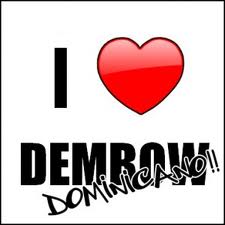





As I wrote back in 2011,
If I were writing my mega-essay on reggaeton today, I’d want to make a lot more space for the Dominican Republic’s local take on the genre.
And that has only gotten truer in the 8 years since, as Dominican dembow has continued to grow, change, and gather steam, including outside of the DR. So I was thrilled that People en Español’s CHICA decided to devote so much space to the genre last month. Jennifer Mota has written the definitive piece on the genre, and while I did provide some quotes and Jenny generously cites my research, it’s a piece that I would recommend whether or not you’re a W&W fan.
Among other things, the article is careful to place Dominican dembow in the longer transnational story of reggaeton, from Jamaica to Panama, New York to Puerto Rico, while also showing how the genre has taken a distinct path from its Puerto Rican cousin. Indeed, while I had long understood dembow as a direct DR response to Playero’s and The Noise’s seminal (proto-reggaeton) mixtapes, Mota shows that Dominican producers such as DJ Boyo had been concocting their own mixed up, hyped up version of Jamaican dancehall since 1993!
In addition to showing how dembow has developed according to a distinct Dominican aesthetic, Mota also attends to critical questions of colorism, gender, and the importance of dance, including the importance of collective/solo “display” dances (i.e., not perreo) — and how such street dance videos on YouTube have been a major vector in the genre’s increasing popularity and reach.
Of course, there’s a reason one might get the space for an article like this at this particular moment in time (though even then, this is of remarkable depth and substance): dembow is hot. The genre appears on the verge of a mainstream breakthrough, especially via the popularity of El Alfa, whose high profile collaborations with Bad Bunny and Cardi B have helped bring as much recognition to the genre as it perhaps has ever seen.
One of the things that has always appealed to me about Dominican dembow is its intensity and weirdness: the density of samples, the rapid tempos, the rough, repetitive refrains. Dominican producers seemed content to pitch their music to Dominican tastes, raised on breakneck merengue, and — like Dutch bubbling — this made the music, by some measures, quite strange to outside ears and perhaps so esoteric as to resist further popularization, never mind appropriation.
That may yet remain the case for Dominican dembow. As the article notes at the outset, El Alfa has yet to push the dembow side of his sound into the mainstream. His collaboration with Cardi B tends toward conventional reggaeton / “tropical pop” and avoids the bracing tempos (except, of course, in his flow) and jarring arrangements of dembow. Framing the question in the article is a telling quote from Chael Produciendo, producer of “Mi Mami,” the collabo with Cardi–
“We understood that to hit the [mainstream] public with it out of nowhere could be overbearing so what we did was create a more pop-influenced beat so that it can touch other waters and later introduce the sound.”
El Alfa’s work with Bad Bunny gets us closer to what mainstream dembow might sound like: “Dame Ga Ge Gi Go Gu” is relentless and noisy, and the beat switch in “La Romana” — notably, moving the song away from bachata-infused trap — gets us pretty close to a dembow sound less invested in the same cherished samples but still drawing broadly on the aesthetic that emerged from such samples being potent vehicles for familiarity and innovation. In some sense, this is not unlike what (Dominican) producers Luny Tunes did to change the sound of reggaeton, redirecting the genre toward the plasticity of synths and “Latin” musical signs while still nodding subtly to the sample-based aesthetic that gave rise to the genre. (Keep your ears on the snares ;)
Whether Dominican dembow’s future parallels reggaeton’s remarkable path to mainstream success and influence remains to be seen, though I agree with the author that 2019 may be the year we find out. If Dominican dembow does take off beyond the DR, Washington Heights, and certain corners of YouTube, this article will provide an excellent guide as to why, when, and how.

I need a dominican dembo beat maker.